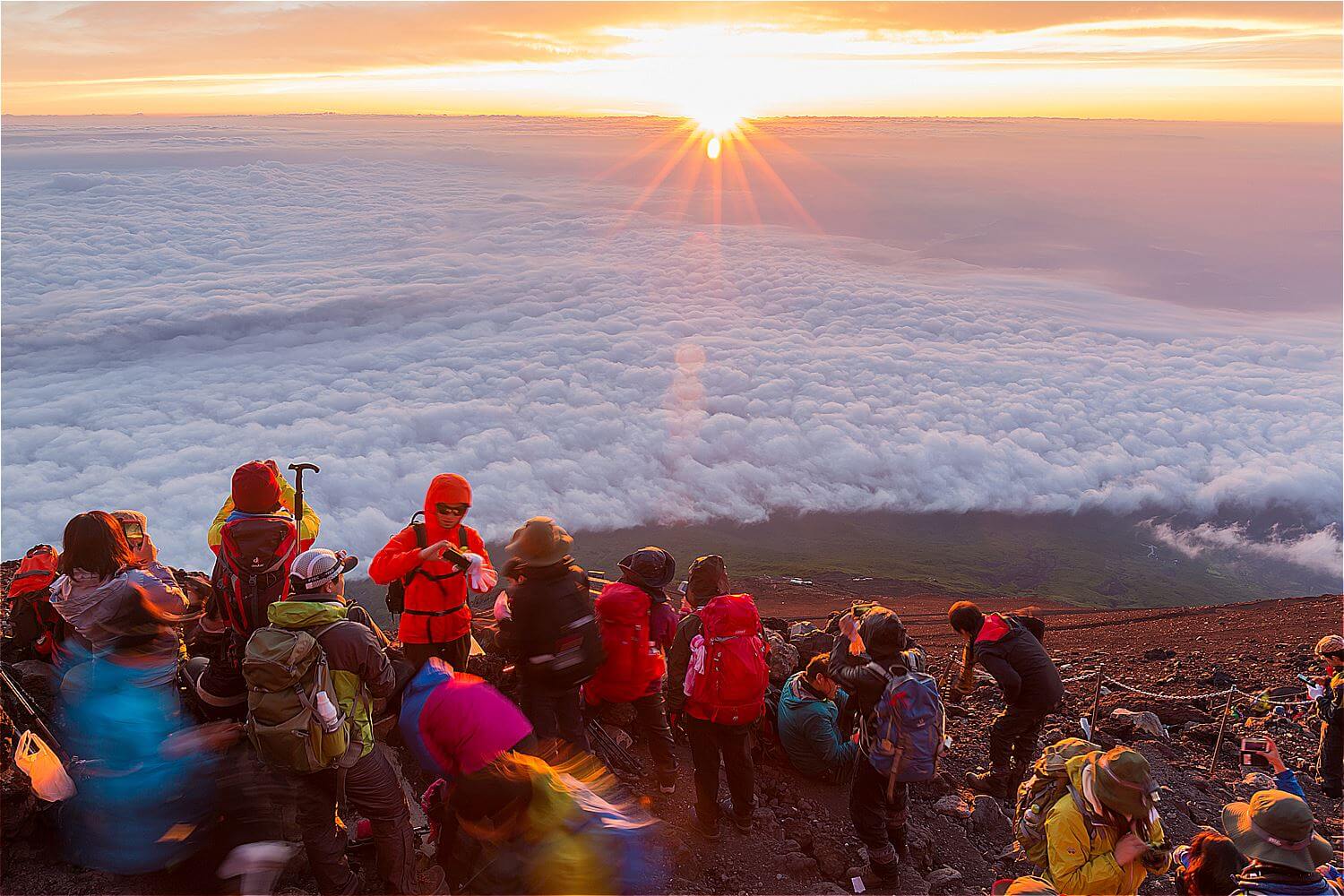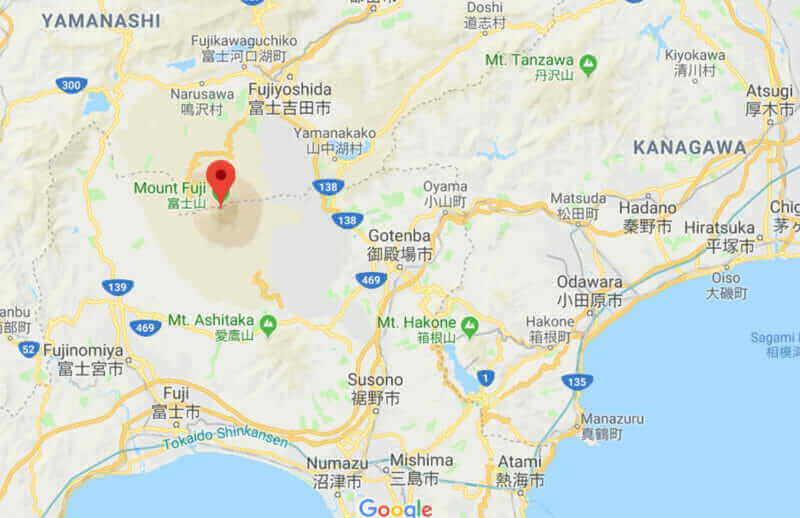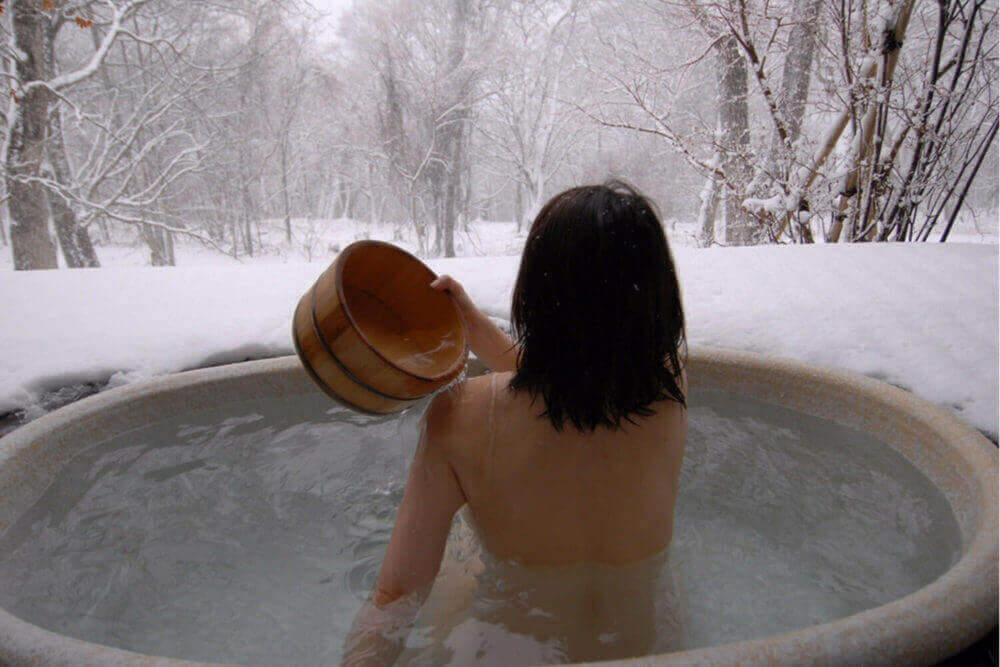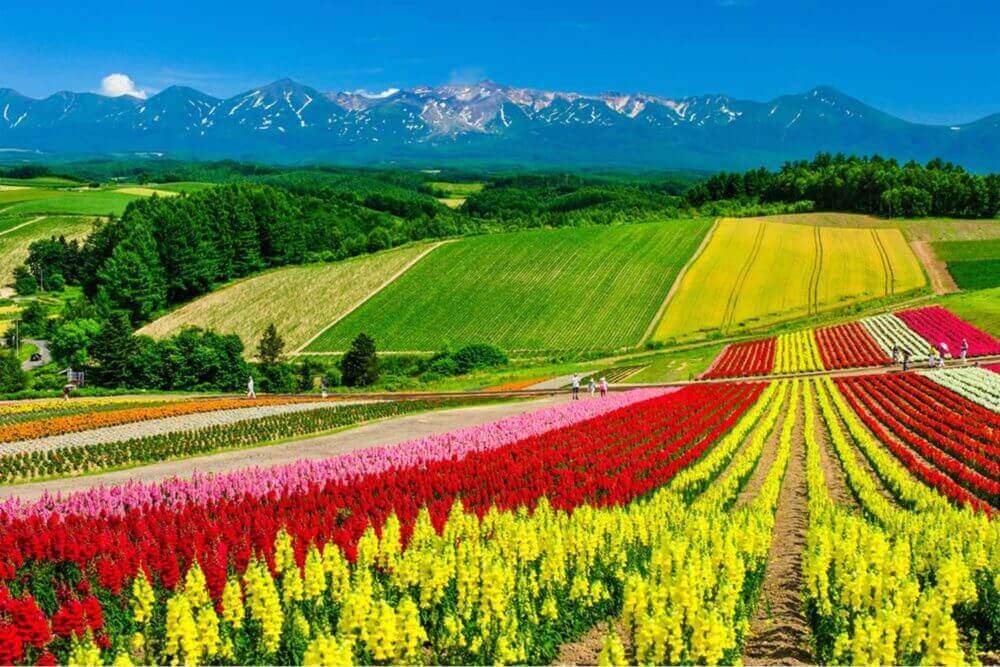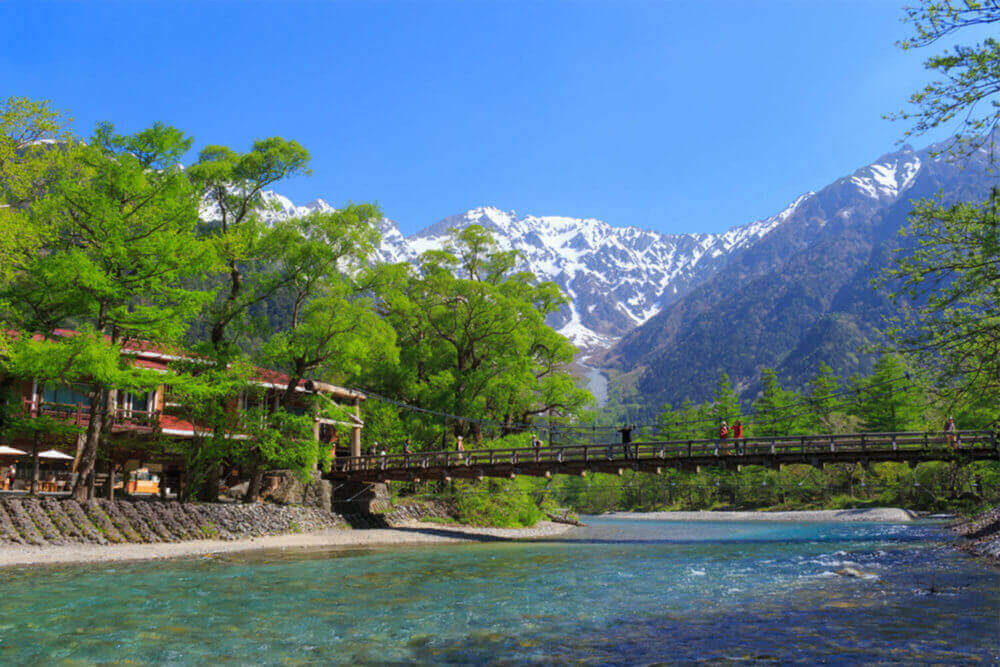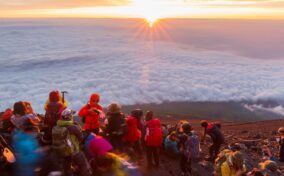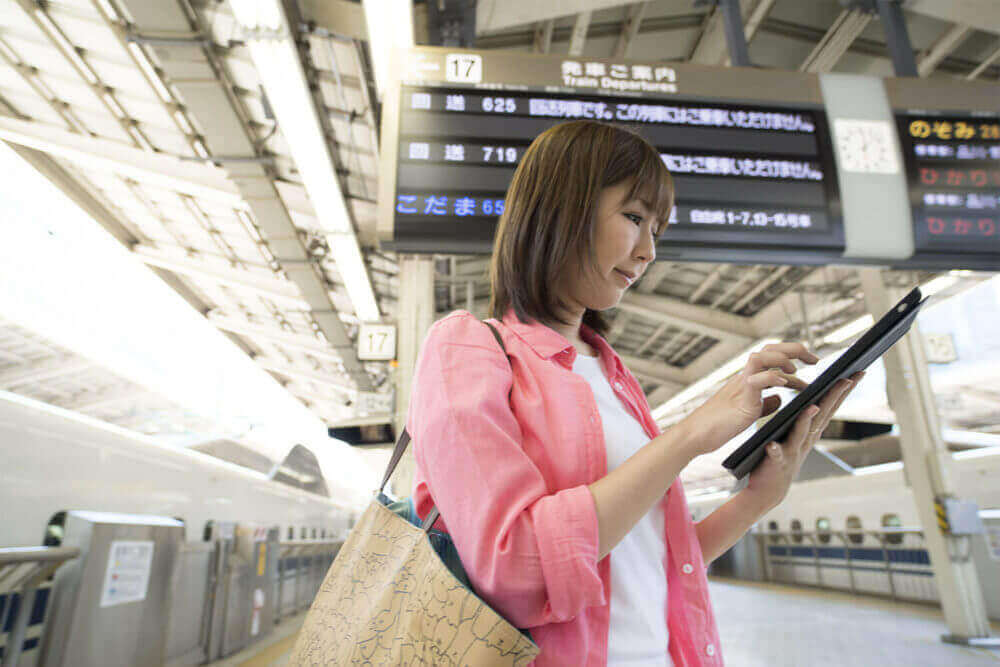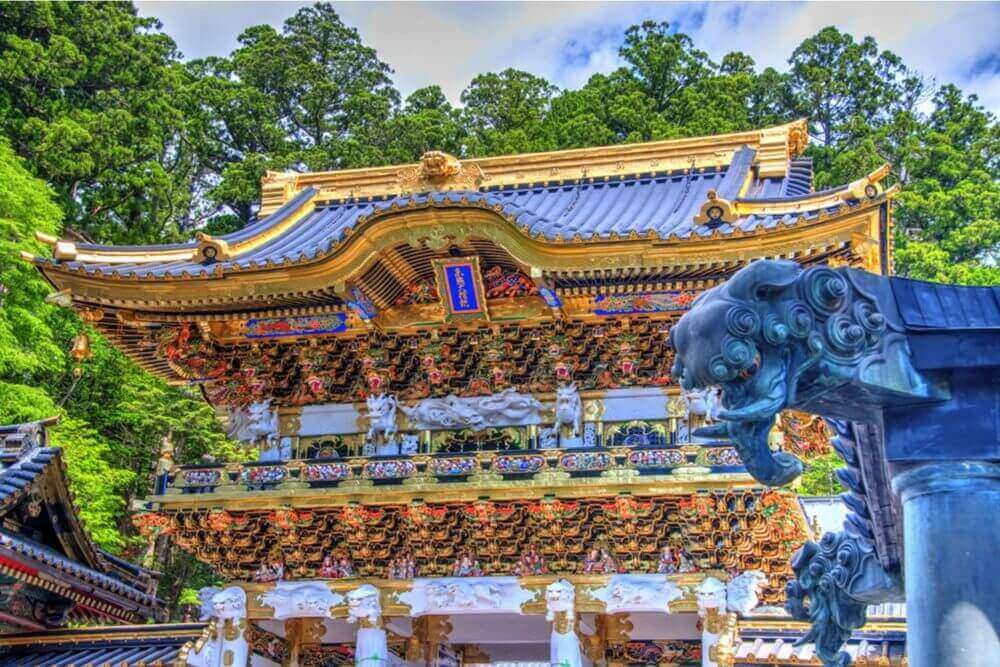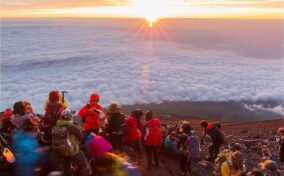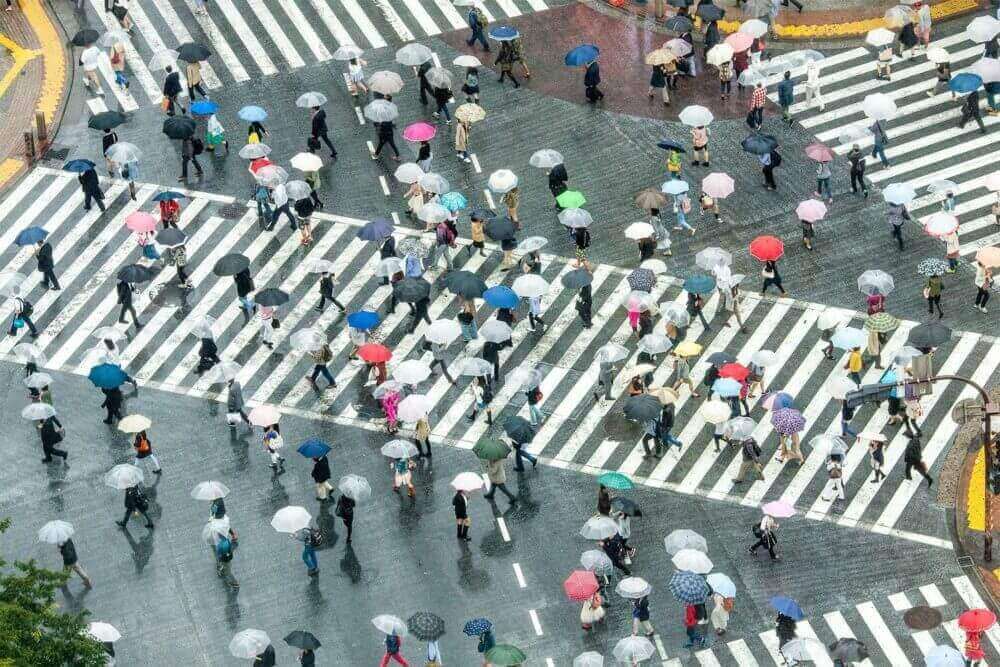On this page, we will introduce how to get to Mt. Fuji and the best viewpoints to see Mt. Fuji.
Mount Fuji is the highest mountain in Japan with an altitude of 3776m. There is a lake that was created by the volcanic activity of Mt. Fuji, creating a beautiful landscape around it.
There are many recommended viewpoints in the north, south, east and west. Among them, the most famous is the view from “Fujiyoshida Sengen Shrine”. Here you can take pictures of two icons that symbolize Japan, Mt. Fuji and the shrine, so it is popular with tourists from overseas. We also recommend the view from Kitayama, Fujinomiya City, Shizuoka Prefecture, a town at the foot of Mt. Fuji, and the distant view from Hakone and Tokyo.
If you want to take your time to see Mt.Fuji, you should avoid going on Japanese holidays. Because there are so many Japanese tourists. Japanese people love Mt.Fuji. As a Japanese person, my favorite view point is Lake Motosuko, which is very quiet. Well, where do you see Mt. Fuji?
>>Click on the map image below to see the map on a separate page<<
Table of Contents
- Access to Mt.Fuji
- Amusement park with a view of Mount Fuji ’Fuji-Q Highland’
- View from Fujiyoshida Sengen Shrine ’Arakurayama Sengen Park’
- View of Mt. Fuji from Lake Kawaguchi, Yamanashi Prefecture
- Shopping with a view of Mt. Fuji ‘Gotemba Premium Outlets’
- Mysterious waterscape at the foot of Mt. Fuji ‘Oshino Hakkai’
- The largest lake of the Fuji Five Lakes ‘Lake Yamanakako’
- Mt.Fuji and Traditional Villages ‘Saiko Iyashino-Sato Nenba’
- Unexplored wilderness remains ‘Lake Motosuko’
- Flower field and Mount Fuji ‘Venue of Fuji Shibazakura Fastival’
- Highland ranch and Mt.Fuji ‘Asagirikogen Highland’
- View of the coast and Mount Fuji ’Miho no Matsubara’
- Distant view of Mt.Fuji from the sea ’Around Enoshima Island’
- Mt. Fuji 5th Station
- Summit of Mt. Fuji
Access to Mt.Fuji
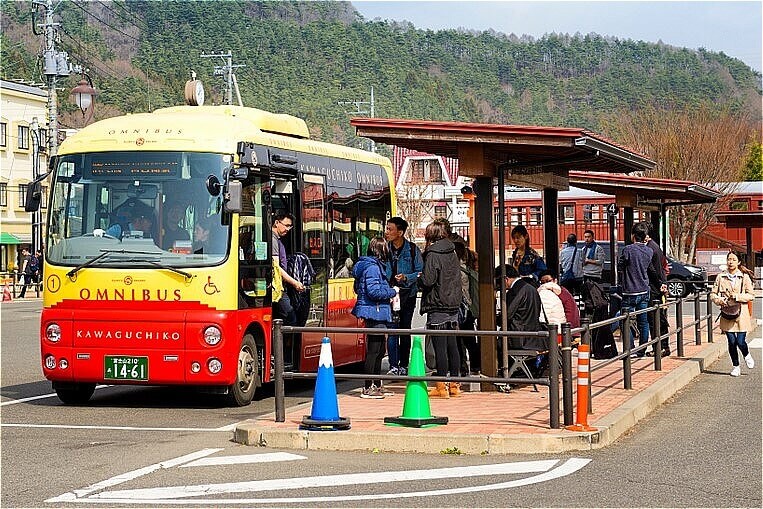
Kawaguchiko Station, Tourists are using the tour bus service. Transportation is very convenient for both train and bus = shutterstock
Bus
Since the surroundings of Mt. Fuji are very vast, there are various routes when going from Tokyo. In general, you can easily go to various spots by using the buses. For details of buses going to Mt. Fuji, please refer to the following Fujikyuko Bus site. From the city center of Tokyo to the spots around Mt. Fuji, it is around 2 hours by bus.
Even when you are traveling around tourist attractions of Mt. Fuji, you should use the bus. Fujikyuko Bus is driving roundabout buses traveling around major tourist attractions.
For these buses, please refer to the official website of the Fujikyuko Bus.
Railway
Fujikyu Railway
To Kawaguchi-ko, you can also take the train. In that case, first go to JR Otsuki station by using the JR Chuo Main Line. If you change from Otsuki station to Fujikyu Line, the end point is Kawaguchiko station. It takes about 55 minutes from Otsuki station to Kawaguchiko station.
For more information on Fujikyu Railway, please see the official website of Fujikyu Railway.
Odakyu Railway
If you go to the area around Gotemba, I recommend using Odakyu Electric Railway express “Fujisan” from Shinjuku station. From Shinjuku Station to Gotemba Station, it is approximately 1 hour and 35 minutes by the limited express “Fujisan”.
For express train “Fujisan” please refer to the official website of Odakyu Electric Railway.
>>Click here for tours that include Mt. Fuji sightseeing.
>>Click here for Mt.Fuji tours and activities.
Amusement park with a view of Mount Fuji ’Fuji-Q Highland’
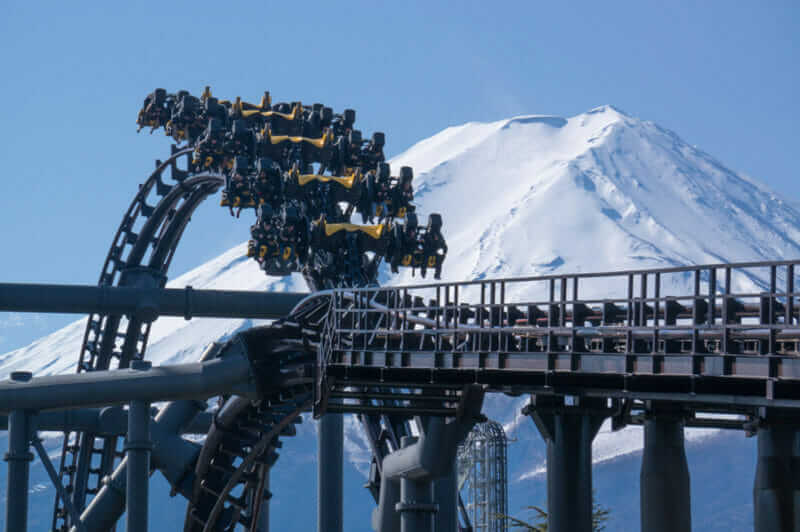
Eejanaika Roller coster in FUJI-Q HighLand ” = Shutterstock
If you want to see Mt. Fuji from somewhere fun place with your friends or kids, I recommend going to Fuji – Q Highland.
Fuji – Q Highland is an amusement park on the north side of Mt. Fuji. Here, as you can see in the picture above, there are many attractions such as roller coasters.
Fuji – Q Highland is free to enter and has a mechanism to pay money when riding individual roller coasters and the like. As this amusement park is close to other tourist destinations such as Lake Kawaguchiko, you may stop by this amusement park on the way to other tourist destinations.
Regarding Fuji-Q Highland, I introduced in detail in the following article.
>> Click here if you want to know the overview of Fuji-Q Highland and the tour menu etc.
View from Fujiyoshida Sengen Shrine ’Arakurayama Sengen Park’

Red Pagoda with Mt Fuji on the background = shutterstock
Arakurayama Sengen Park is a very popular tourist attraction for foreign tourists. When you climb up to the middle of the mountain, beautiful Mt. Fuji can be seen behind the “five-storied pagoda”. Cherry blossoms are also beautiful in early April.
To be precise, this “five-storied pagoda” is not a pagoda, but a memorial tower of the war dead. But, it looks like a pagoda. There is no other place to put together such a pagoda and Mt. Fuji in one picture.
In order to go to the five-storied pagoda, visitors must go up 398 steps. I have witnessed the elderly falling down this stairway. If your father or mother just wanted to go to this hillside of the mountain, I recommend going up a slope next to the stairs. If you go up the slope, the distance will be longer, but you can slowly move forward with a small width.
Arakurayama Sengen Park is a 15-minute walk from Shimoyoshida Station on Fujikyu Railway.
View of Mt. Fuji from Lake Kawaguchi, Yamanashi Prefecture
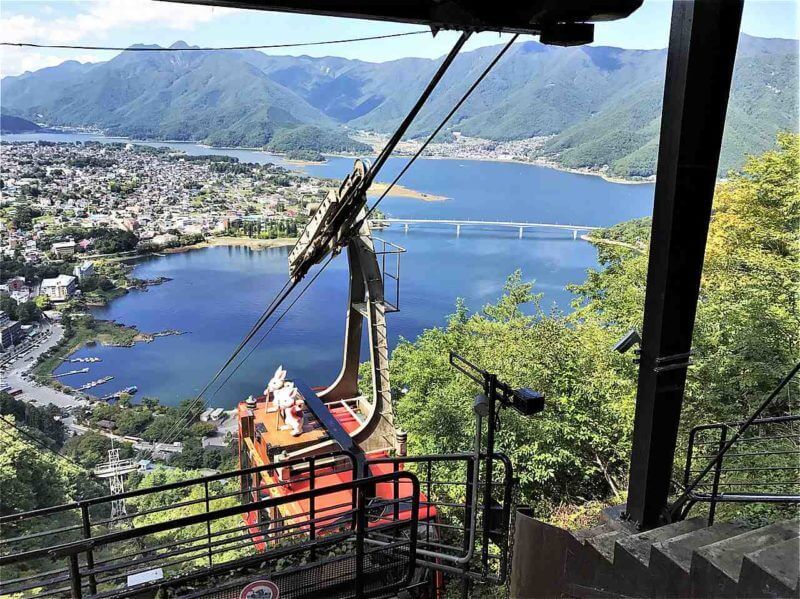
You can see Mt. Fuji and Lake Kawaguchiko from the ropeway of the Mt.Kachikachi, Japan
Attractions
If Japanese are going to see Mt. Fuji, the sightseeing spot that comes to mind first is probably Lake Kawaguchiko.
On the northern side of Mt. Fuji there are five lakes born by the volcanic activity of Mt. Fuji. They are called “Fuji Goko (Fuji Five Lakes)”. Among them, Lake Kawaguchiko, which is closest to Tokyo, is one of the most popular lakes.
Lake Kawagushiko is around 19 kilometers and is the second largest among Fuji Five Lakes, after Lake Yamanaka. The sea level of this lake is 839 m. On the eastern shore is a spa resort called “Fuji-Kawaguchiko Onsengo” where hotels are scattered.
The major tourist attractions around Lake Kawaguchiko are as follows.
Mt. Fuji Panoramic Ropeway
Take the Mt. Fuji Panoramic Ropeway and you can reach the summit of My.Tenjo in the east side of Lake Kawaguchi in 3 minutes. From the observation deck of altitude 1,075 meters, you can see Mt. Fuji and the whole view of Kawaguchiko.
It is a 15-minute walk from Kawaguchiko Station to the Ropeway station at the foot of the mountain.
Sightseeing Boat “Ensoleillé”
At Lake Kawaguchiko, the Sightseeing Boat “Ensoleillé” is operated for tourists. This boat is for 120 people. The boat station is located 15 minutes on foot from Kawaguchiko station. The boat travel around Lake Kawaguchi for about 20 minutes.
If you take this boat on a ropeway, you will mostly know the whole picture of Kawaguchiko. And you should be able to appreciate beautiful Mt.Fuji.
>>Click here for tours that include Mt. Fuji sightseeing.
>>Click here for Mt.Fuji tours and activities.
Mt. Fuji in autumn

Lake Kawaguchiko , Colorful Autumn Season and Mountain Fuji with morning fog and red leaves at lake Kawaguchiko, Japan = shutterstock
In Lake Kawaguchi you will be satisfied with the beautiful scenery of Mt. Fuji every season without searching for any special attractions.
On the north bank of Lake Kawaguchiko, there are maples lining up about 150 meters. These maples begin to change color from October every year, and reach the peak of autumn leaves from mid-November to late November. If you go to Lake Kawaguchiko at this time, you can enjoy the autumnal scenery of Mt. Fuji like the photo above.
Mt. Fuji in winter

Mt Fuji with snow in winter at lake Kawaguchiko Japan -Shutterstock
Mt. Fuji seems to be the most beautiful in the winter season. It is because the air is very clear in this period.
In the Lake Kawaguchiko, snow falls several times a year. The next day when snow fell, there are so many sunny times, the scenery of Mt. Fuji at that time is the most amazing.
Because the altitude is high around Lake Kawaguchi, it is very cold in winter, except on snow days. The temperature of the recent Lake Kawaguchiko area is as follows.
December: maximum 8 ° C / minimum -4 ° C
January: maximum 5 ° C / minimum – 7 ° C
February: maximum 6 ° C / minimum -6 ° C
Although it freezes on the lake, it is not that thick. It easily breaks when you ride on ice. Please be careful as it is very dangerous.
Mt. Fuji from a hotel around Lake Kawaguchiko
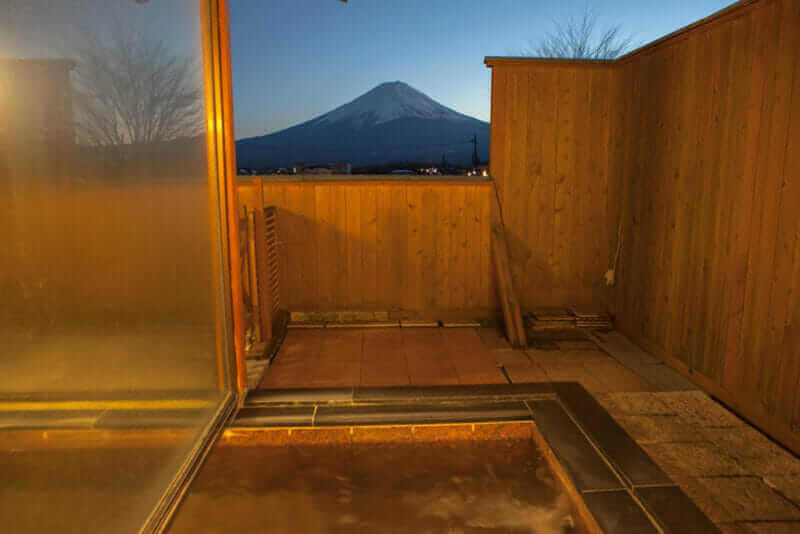
Japaneses onsen and Mount Fuji view = shutterstock
On the eastern shore of Lake Kawagutiko, hotels with Onsen (hot springs) are scattered. This area is collectively referred to as Kawaguchiko Onsen. I think that it is wonderful to see Mt. Fuji from a hotel in this area.
To tell the truth, Japanese did not pay much attention to hot spring resort in this area. However, recently foreign tourists began to pay attention to this area. As a result, the hotels compete for renewal and it is getting better and better.
I also introduced Kawaguchiko Onsen in the article about the hot springs below. Please drop by the following article if you do not mind.
Shopping with a view of Mt. Fuji ‘Gotemba Premium Outlets’

Beautiful scenery during sunset time of Mountain Fuji view point at Gotemba Premium Outlets , Shizuoka in Japan = shutterstock
Gotemba Premium Outlets is Japan’s largest outlet mall located southwest of Mt. Fuji. More than 200 brand shops are lined up here.
This outlet mall is very popular among tourists. You can enjoy shopping while watching Mt. Fuji in front of you here. Both MT.Fuji and this outlet mall are spectacular, so you will feel very comfortable.
I introduced the details of Gotemba Premium Outlets in an article about shopping below. Please refer to that article if you like.
Mysterious waterscape at the foot of Mt. Fuji ‘Oshino Hakkai’
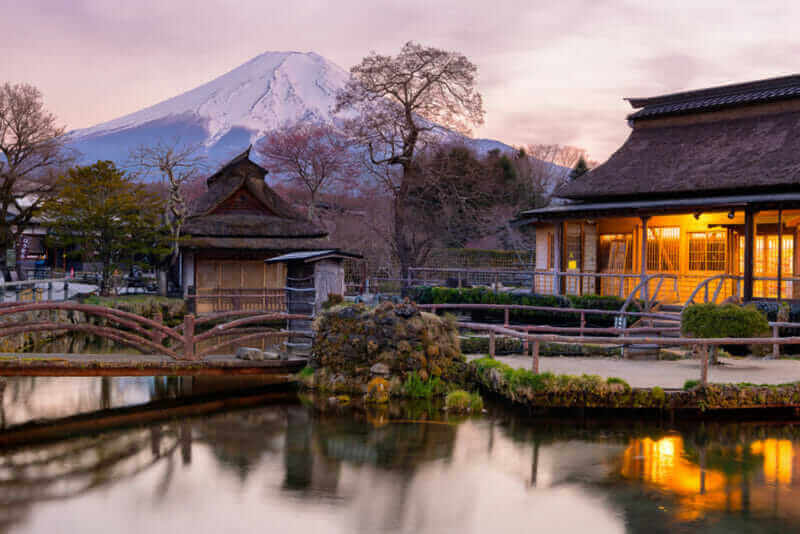
Oshino Hakkai is a small village in the Fuji Five Lake region, located between Lake Kawaguchiko and Lake Yamanakako = shutterstock
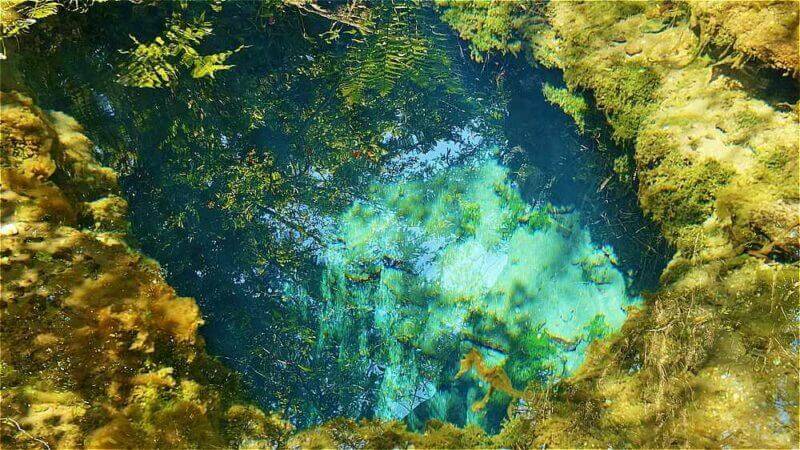
Okamaike pond in Oshino, Yamanashi, Japan = shutterstock
Oshino Hakkai is a collective term for the eight ponds in Oshino village south of Lake Kawaguchi. “Hakkai” means eight seas in Japanese. From the bottom of these ponds, the melting water of Mt. Fuji springs up. As these ponds are so beautiful, the tourists explore the ponds while looking at Mt. Fuji.
It is said that there was an ancient lake here. However, the lake dried up. Only the part where the spring water of the lake comes out remained as ponds.
Fuji seen from Oshino Hakkai is wonderful, but in the afternoon it will be backlit. You will be able to take good pictures to go in the morning.
The largest lake of the Fuji Five Lakes ‘Lake Yamanakako’
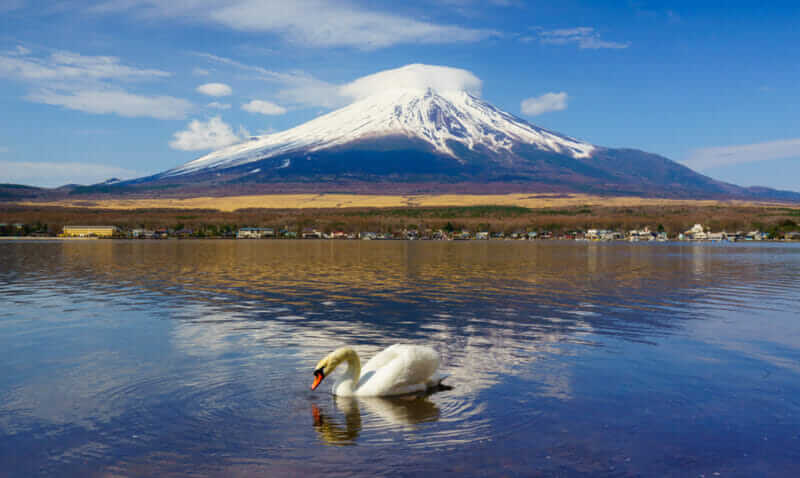
White Swan with Mount Fuji at Lake Yamanakako, Yamanashi, Japan = shutterstock
Lake Yamanakako is a lake on the west side of Mt. Fuji. That is the biggest of Fuji Five Lakes. Because the altitude is 980 meters, the temperature difference with Tokyo is over 7 degrees. So it is relatively cool in the summer and it is a summer resort. Because there are many tennis courts etc. around this lake, it is often used as a summer camping destination by Japanese college students.
This lake has a high altitude and a shallow water depth, so it often freezes during the winter season. If you want to shoot Mt. Fuji in winter beautifully, you may want to shoot around this lake.
To Yamanakako, it is a 25-minute bus ride from Mt. Fuji Station of Fujikyu Line. It is 40 minutes from JR Gotemba Station.
Mt.Fuji and Traditional Villages ‘Saiko Iyashino-Sato Nenba’
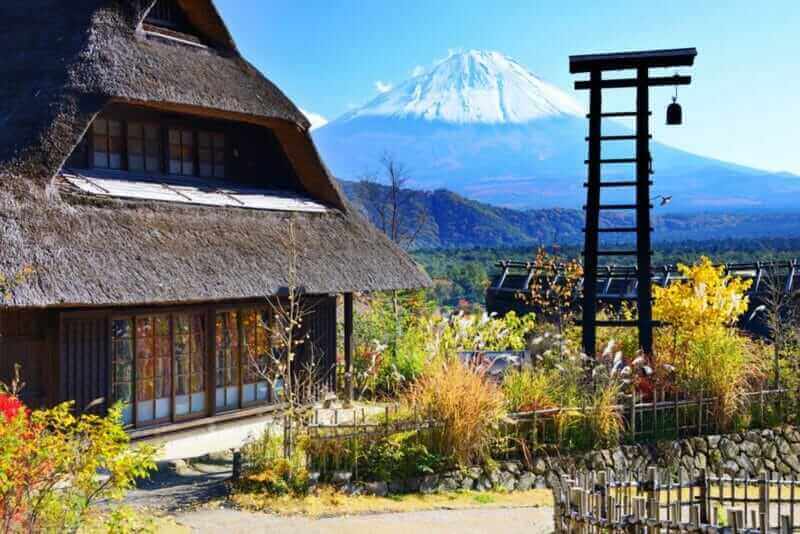
Saiko Iyashino-Sato Nenba ancient japanese village is a reconstructed Japanese village where visitors can explore In each individual building = shutterstock
The open-air museum “Saiko Iyashino-Sato Nenba” is located about 50 minutes west by bus from Kawaguchiko Station. Here are 20 old-fashioned houses of thatched roof. You can take pictures of beautiful Japanese settlements and Mt. Fuji.
There used to be a real rural village here. However, in 1966, a typhoon caused debris flow and the village was destroyed. The villagers relocated to another land. After that, the private house was restored, and an open air museum was born.
In this open air museum, you can relive the world of Japanese farmers who once lived here. The fact that I felt strongly when visiting here is that there are so many water flowing from Mt. Fuji. If you go here, you surely feel the blessing of the water of Mt. Fuji.
In the winter, snow falls from time to time in this area. If you go after snowing, you will be able to experience an incredibly divine world.
Unexplored wilderness remains ‘Lake Motosuko’
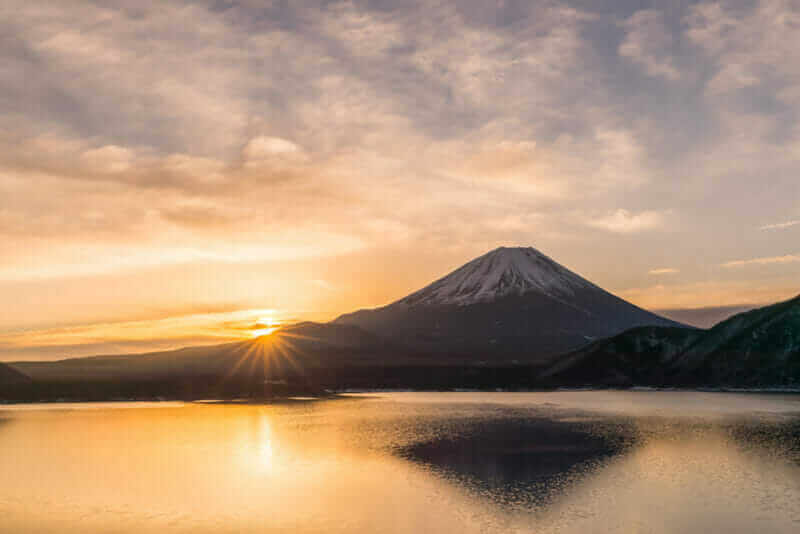
Lake Motosuko and Mt. Fuji at early morning in winter season. Lake Motosuko is the westernmost of the Fuji Five Lakes and located in southern Yamanashi Prefecture near Mount Fuji, Japan = shutterstock
If you want to go to a quieter and mysterious lake than Lake Kawaguchiko and Lake Yamanakako, I recommend Lake Motosuko.
Lake Motosuko is the westmost side of Fuji Five Lakes. It is the third largest among the five lakes. Its maximum water depth is 121.6 m, the highest transparency.
The area I particularly recommend at Lake Motosuko is the northwest side of the lake. The view of MT.Fuji seen from the vicinity of the “Koan Campground” on the northwest shore is extremely brilliant, and it is printed on the thousand-yen bill in Japan.
I stayed at this campsite cottage in November and saw the sunrise from Mt. Fuji. At first the stars shone and the lake was shining with the moonlight. Eventually the surroundings of Mt. Fuji became blue, and the mountains around were shining at the moment the sun rose. I have never seen such amazing scenery.
Flower field and Mount Fuji ‘Venue of Fuji Shibazakura Fastival’
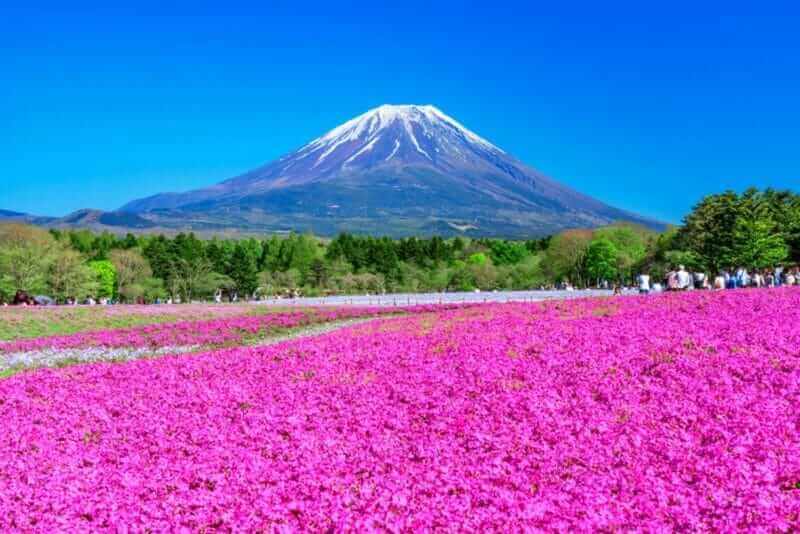
Mt. Fuji and Shibazakura (moss phlox, moss pink, mountain phlox). A spectacular spring landscape representing Japan = shutterstock
On the south side of Lake Motosuko, a vast slope of Mt. Fuji is spreading. There, “Fuji Shibazakura Festival” is be held from mid April to late May. At this time, Shibazakura (moss phlox) will bloom all over the place, making the scenery of Mt. Fuji even more beautiful.
About the Fuji shibazakura Festival, I introduce in the article about flower gardens in Japan. If you are interested, please refer to the following article.
Highland ranch and Mt.Fuji ‘Asagirikogen Highland’
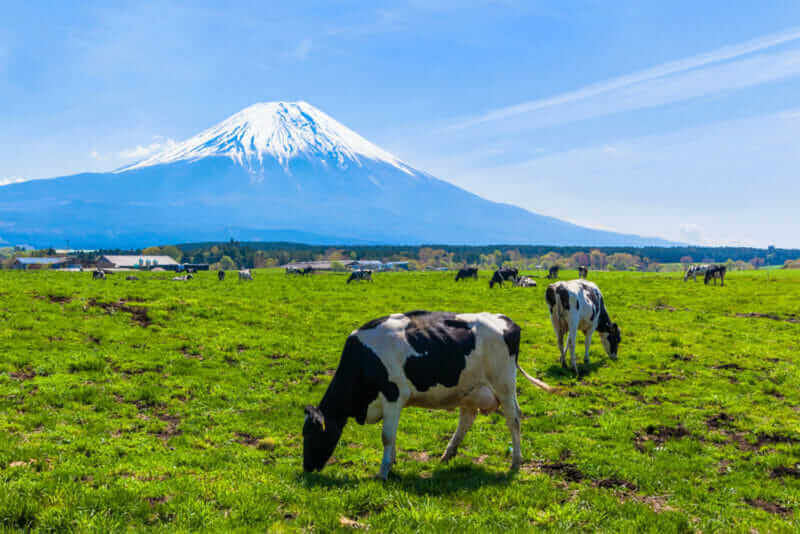
Cattle grazing in Asagirikogen to Mount Fuji views = shutterstock
Asagirikogen Highland is a vast plateau spreading west of Mt. Fuji. If you go to this plateau, you can see the big Mt. Fuji in front of you.
Asagirikogen Highland is 700-1000 meters in altitude. It is relatively cool even in the summer, so it is popular as a summer resort. There are many ranches. There are also places where you can experience paragliding. Recently, the number of auto camping sites is on the rise.
It is better to go from the south to this plateau than go from Kawaguchi-ko. It is approximately 50 minutes by bus from Fujinomiya Station of JR Minobu Line.
View of the coast and Mount Fuji ’Miho no Matsubara’
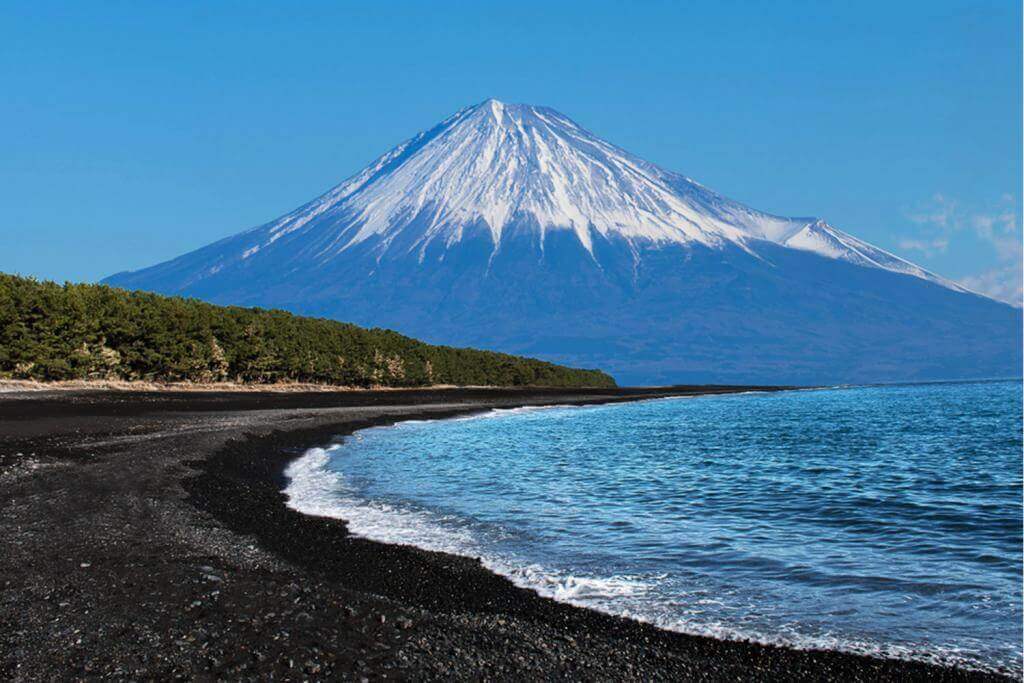
Miho no Matsubara is a black beach with Fuji mountain.A famous place for sightseeing = Shutterstock
Miho no Matsubara is a coast located about 45 km southwest of Mt. Fuji. There are more than 30,000 pine trees on this coast for 7 kilometers. The view of Mt. Fuji from the coast was praised in the old age of Japan. Because of this history, when Mt. Fuji was registered as a World Heritage Site, Miho no Matsubara was also registered together. So it’s crowded with many tourists.
Since Miho no Matsubara is in the middle of the route (Tokaido) connecting Tokyo and Kyoto, in the past many tourists stopped by. Hiroshige UTAGAWA, a famous painter of the Edo period, also painted Miho no Matsubara. If you are interested in Japanese paintings and history, you may want to go to Miho no Matsubara.
To the entrance of Miho no Matsubara, it is approximately 30 minutes by bus from JR Shimizu station.
Distant view of Mt.Fuji from the sea ’Around Enoshima Island’
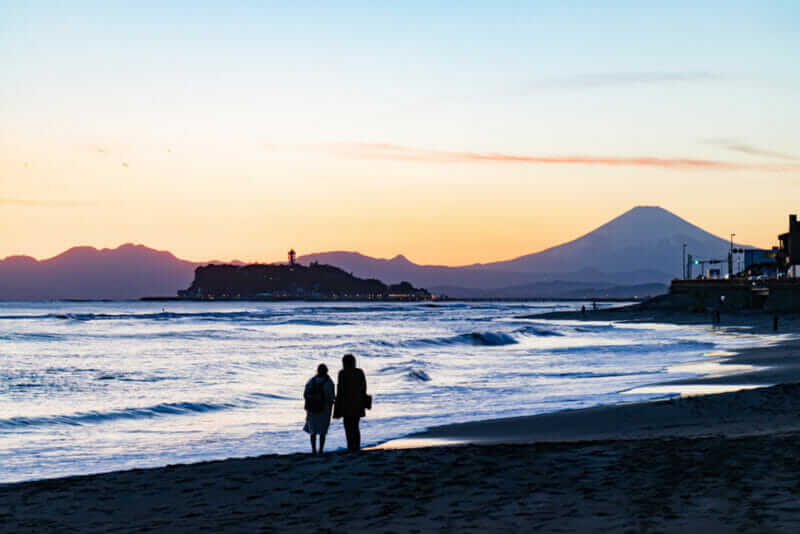
Mount,Fuji,and,Enoshima,Shonan,Kanagawa,Japan = shutterstock
If you are traveling in Tokyo, why not stop by Enoshima Island which is about an hour from Shinjuku station by the Rapid Express “Romance car” of the Odakyu Railway.
Enoshima is a small island located about 70 kilometers from Mt. Fuji. However, from the wonderful beach near this island you can see Mt. Fuji like the photo above. In the evening on a sunny day, the silhouette of Mt. Fuji is beautifully shaped by the sunset.
I used to stay with my family at a hotel near Enoshima and took a walk around this beach in the morning and evening. I was surprised that Mt. Fuji is 70 kilometers away but there is a very strong presence. I would like to recommend you to see Mt. Fuji from around Enoshima.
Mt. Fuji 5th Station
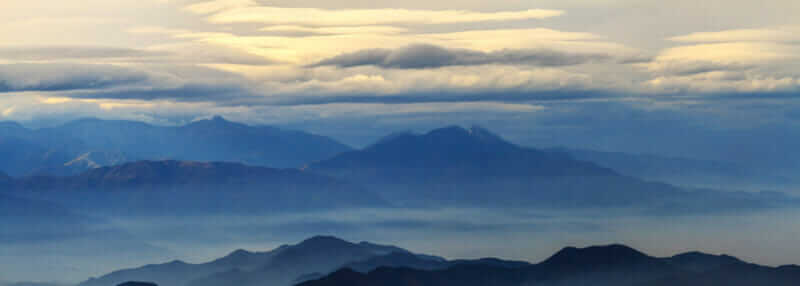
Panorama view point at 5th Station on the southern slope of Mount Fuji = shutterstock

Fuji Subaru line 5th station, halfway point of the Yoshida Trail, which leads from Fujiyoshida Sengen Shrine at the mountain’s base to the summit of Mount Fuji = shutterstock
Climbing to Mt. Fuji usually starts from the fifth station (halfway point). People can go to the fifth station by car. Accommodation, restaurants, souvenir shops, etc. are lined up in the fifth station. Climbers prepare here. And they climb from the fifth to sixth, seventh, eighth, ninth and finally arrive at the summit.
Mt. Fuji has four main climbing routes. The route where the facilities of the fifth station is the most satisfying is the Yoshida route on the north side. The altitude of this 5th station is 2,305 meters. If you go to the 5th station on the Yoshida route, you can enjoy walking around, dining and shopping. You can even ride a horse.
Mt. Fuji climbing is limited from the beginning of July to the middle of September, but many facilities of the 5th station on the Yoshida route are open from the middle of April to the middle of December. You can feel the power of Mt. Fuji so close by.
The problem is how to go to the 5th station.
Please pay attention to two things and carefully make your travel plan. First, during summer mountaineering season (July 1st to September 10th at Yoshida route), Fuji Subaru Line frequently regulates the traffic of private cars. So it is better to use the bus than rent-a-car in this period.
Various buses are operated during this season. It is about 50 minutes by bus from Kawaguchiko Station of Fujikyu Railway to the Yoshida Route’s 5th station. In addition, there are many sightseeing buses that go straight from Tokyo to this 5th station.
Secondly, as the climbing season ends, many buses will not operate. So please check in advance if the bus you wish will operate on the day you want.
The route bus that goes from the Kawaguchiko area to the fifth stop will basically be operated even after the mountaineering season ends. However, the road up to the fifth station (Fuji Subaru Line) is often closed due to snow. At this time, the bus will not be operated as a matter of course.
Some people aim for the 5th station by using private cars since autumn. However, other than summer, Mt. Fuji is a dangerous place, so please never force.
>>Find the Mt. Fuji 5th Station best deal, compare prices, and read what other travelers have to say at Tripadvisor
Summit of Mt. Fuji
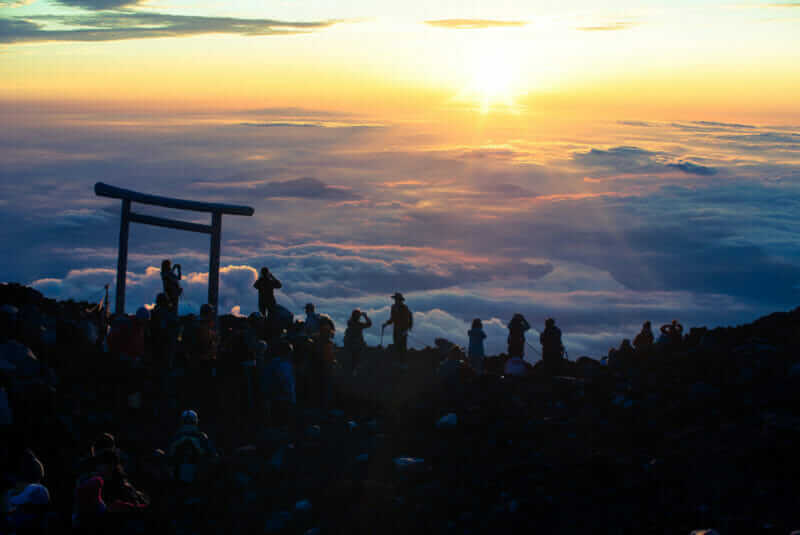
Hikers at the summit of Mt. Fuji during sunrise = shutterstock

Crowds of climbers at the summit. Most Japanese climb the Fuji mountain at night in order to be in a position at or near the summit when the sun rises = shutterstock
If you travel in Japan in the summer, I think that it is a good idea to climb the top of Mt. Fuji. It is fun to explore at the fifth station of Mt. Fuji, but the view is much more beautiful at the summit.
You can climb from July to early September. Recently, tours for foreign tourists are on the rise, so it may be good to participate in those tours.
>>Click here for tours that include Mt. Fuji sightseeing.
>>Click here for Mt.Fuji tours and activities.
Regarding the climbing Mt. Fuji, I introduced in the article about hiking. If you are interested, please refer to the following article.
Thank you for reading to the end.
Now, let’s plan to make your vacation in Japan the best experience ever!
